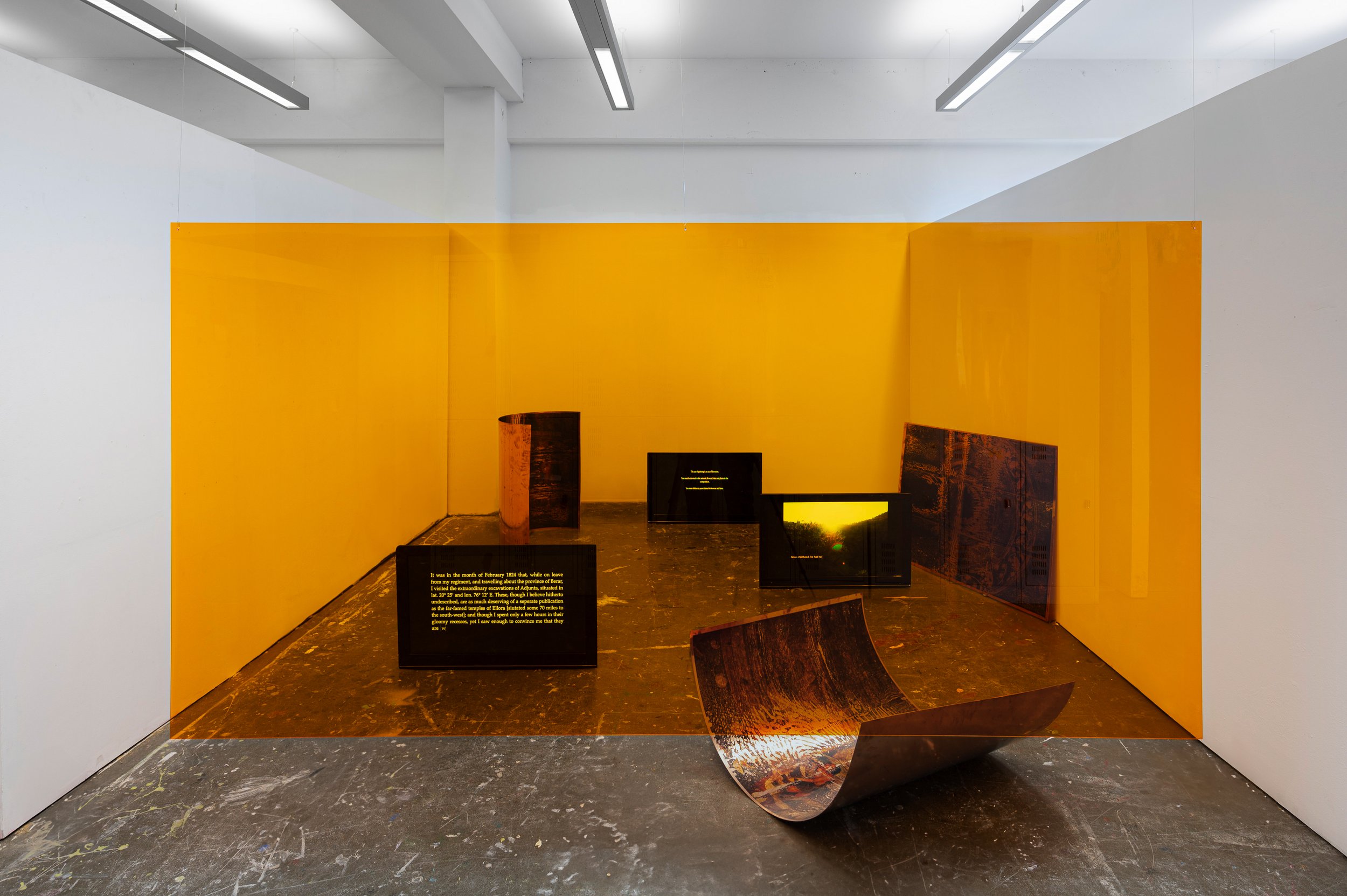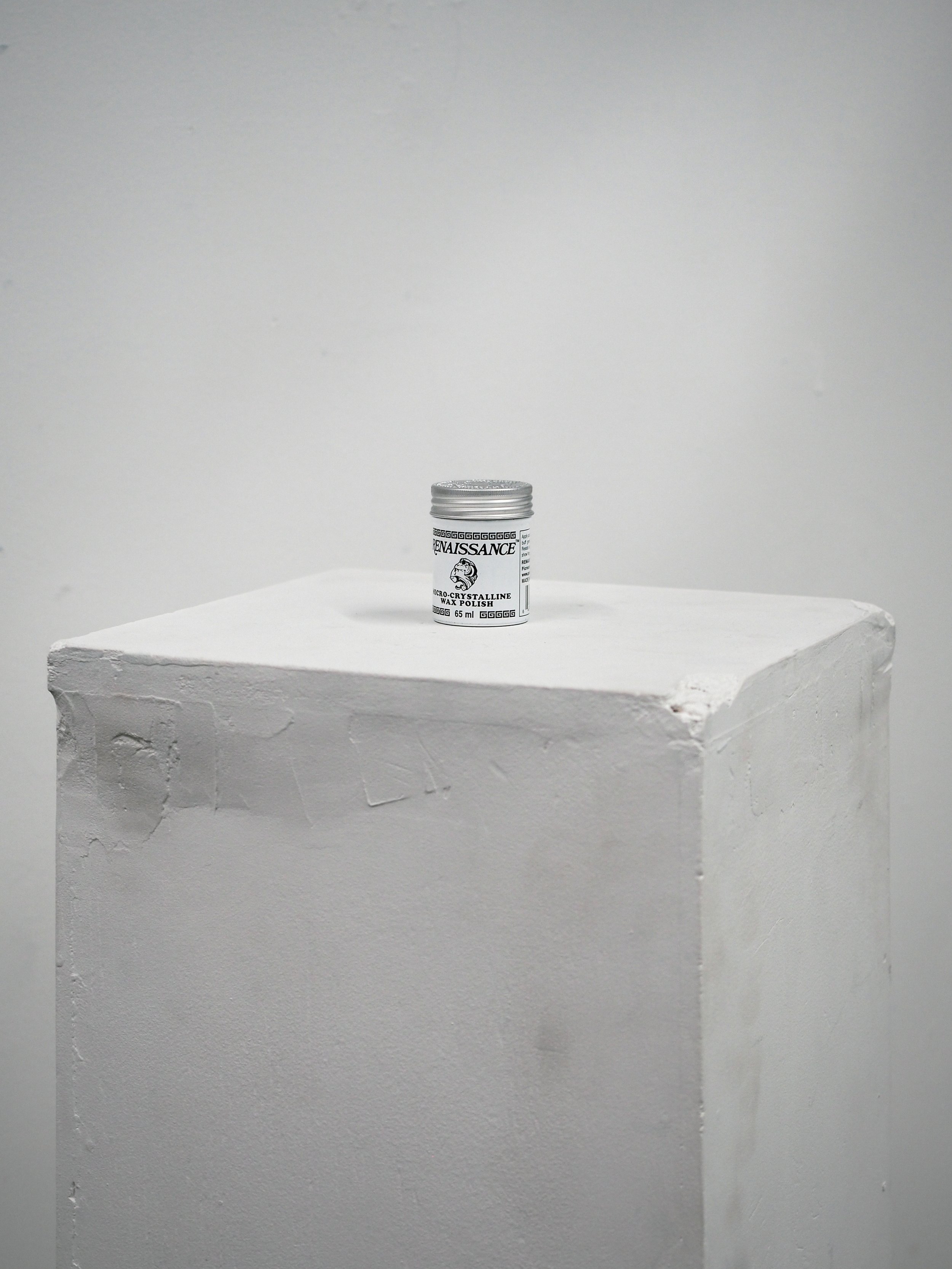Museological Modality
Studio, 2023
Digital prints hand transferred onto copper, suspended, three channel video work, Renaissance Wax, assorted shellac flakes in vitrines, projection.
Duration and dimensions variable.
In writing on Colonialism and its Forms of Knowledge (1996), anthropologist Bernard Cohn observed a particular ‘museological modality’ to the British colonisation of India as the country was perceived as a ‘vast museum’ whose classification, selective preservation and extraction was used to construct a history ‘for’ the uncivilised culture. In this installation, methods of preservation are on display, from Renaissance Wax, formulated by the British Museum in the 1950s, to the assorted and separated unactivated shellac flakes into three acrylic vitrines. Lights, reminiscent of the museum, shine down on the ‘sacred’ artefacts placed upon a large plinth. Somewhere in the bottom right corner of the room a black-and-white projection of the ‘poor image’ sits, stripped completely of its pigment. The projector is only reminiscent of old ethnographic films, yet as a technology, it is not old, nor are the images it displays from a colonial past. The shellac flakes too are freshly removed from a packet not collected as evidence from an excavations site. A temporal anachronism is only alluded to but not enacted. Only the materiality of salvaging, of preservation, is encountered within the post-colonial moment. Another imperial mythology exposes itself. No matter the attempt, genuine or critical, the original artefact always seems to elude the institution.
In the space adjacent, a large suspended amber filter resonates both the vitrine and the shellac, a signifier that enacts as a resistance of entering the space. Three asynchronous narrative accounts are played on screens that become surfaces of re-inscription: excerpts from a translation of the pre-colonial Chitrasutra of the Vishnudharmottara Purana, Fergusson’s colonial letters, and the artist’s own diary upon visiting Ajanta. They sit in relation to the copper forms which now, instead of a triptych formation, are separated, as though severed from one another, alluding to the violence of displays within institutions.

Photo: Gavin Jowitt

Photo: Liam Macann
